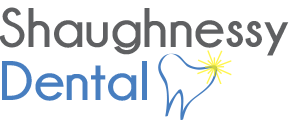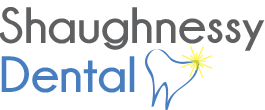Dental Nutrition
Teething Tots
Teething, the emergence of the first teeth through a baby’s gums, can be a frustrating time for little ones and their parents. It helps to know what to expect when your child is teething and how to make the process a little less painful.
The Teething Process
Teething can begin as early as 3 months and continue until a child’s third birthday.
Between the ages of 4 and 7 months, you’ll notice your baby’s first tooth pushing through the gum line. The first teeth to appear usually are the two bottom front teeth, also known as the central incisors. These are usually followed 4 to 8 weeks later by the four front upper teeth (central and lateral incisors). About a month later, the lower lateral incisors (the two teeth flanking the bottom front teeth) will appear.
Next to break through the gum line are the first molars (the back teeth used for grinding food), then finally the eyeteeth (the pointy teeth in the upper jaw). Most kids have all 20 of their primary teeth by their third birthday. (If your child experiences significant delay, speak to your doctor.)
In some rare cases, kids are born with one or two teeth or have a tooth emerge within the first few weeks of life. Unless the teeth interfere with feeding or are loose enough to pose a choking risk, this is usually not a cause for concern.
As kids begin teething, they might drool more and want to chew on things. For some babies, teething is painless. Others may experience brief periods of irritability, and some may seem cranky for weeks, with crying jags and disrupted sleeping and eating patterns. Teething can be uncomfortable, but if your baby seems very irritable, talk to your doctor.
Although tender and swollen gums could cause your baby’s temperature to be a little higher than normal, teething doesn’t usually cause high fever or diarrhea. If your baby does develop a fever during the teething phase, it’s probably due to something else and you should contact your doctor.
Easing Teething
Here are some tips to keep in mind when your baby is teething:
- Wipe your baby’s face often with a cloth to remove the drool and prevent rashes from developing.
- Give your baby something to chew on. Make sure it’s big enough so that it can’t be swallowed and that it can’t break into small pieces. A wet washcloth placed in the freezer for 30 minutes makes a handy teething aid — just be sure to wash it after each use. Rubber teething rings are also good, but avoid ones with liquid inside because they may break or leak. If you use a teething ring, be sure to take it out of the freezer before it becomes rock hard — you don’t want to bruise those already swollen gums!
- Rub your baby’s gums with a clean finger.
- Never tie a teething ring around a baby’s neck — it could get caught on something and strangle the baby.
- If your baby seems irritable, acetaminophen may help — but always consult your doctor first. Never place an aspirin against the tooth, and don’t rub alcohol on your baby’s gums.
Baby Teeth Hygiene
The care and cleaning of your baby’s teeth is important for long-term dental health. Even though the first set of teeth will fall out, tooth decay can hasten this process and leave gaps before the permanent teeth are ready to come in. The remaining primary teeth may then crowd together to attempt to fill in the gaps, which may cause the permanent teeth to come in crooked and out of place.
Daily dental care should begin even before your baby’s first tooth emerges. Wipe your baby’s gums daily with a clean, damp washcloth or gauze, or brush them gently with a soft, infant-sized toothbrush and water (no toothpaste!). As soon as the first tooth appears, brush it with water.
Toothpaste is OK to use once a child is old enough to spit it out — usually around age 3. Choose one with fluoride and use only a pea-sized amount or less in younger kids. Don’t let your child swallow the toothpaste or eat it out of the tube because an overdose of fluoride can be harmful to kids.
By the time all your baby’s teeth are in, try to brush them at least twice a day and especially after meals. It’s also important to get kids used to flossing early on. A good time to start flossing is when two teeth start to touch. Talk to your dentist for advice on flossing those tiny teeth. You can also get toddlers interested in the routine by letting them watch and imitate you as you brush and floss.
Another important tip for preventing tooth decay: Don’t let your baby fall asleep with a bottle. The milk or juice can pool in a baby’s mouth and cause tooth decay and plaque.
The Canadian Dental Association recommends that kids see a dentist by age 1, when six to eight teeth are in place, to spot any potential problems and advise parents about preventive care.
Comments are closed


